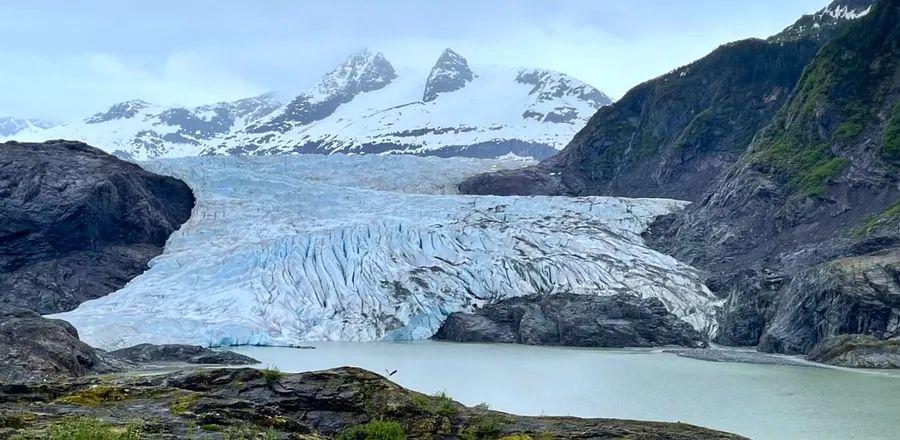The 8 Most Picturesque National Forests in the United States

Similar to national parks, U.S. national forests safeguard a wide variety of plants and animals while preserving some of the country's most stunning landscapes. However, these areas differ as they also allow for activities such as hunting, logging, and broader recreation. Additionally, while dogs are often prohibited on national park trails, they are typically allowed in national forests.
Covering over 188 million acres of public land, the United States has 155 national forests, which is roughly equivalent to the combined area of Texas and West Virginia. Many of these national forests are adjacent to national parks, providing similar breathtaking views but with far fewer visitors. This often gives you the sensation of having the protected spaces all to yourself.
Discover the eight most stunning national forests worth visiting in the United States.
1. Tongass National Forest
Alaska
- Accommodation: Pybus Point Lodge
Covering an impressive 16.9 million acres, Tongass National Forest is the largest national forest in the U.S. It spans the Inside Passage area in southeastern Alaska (a popular stop for Alaska cruises) alongside British Columbia. Its sheer size includes both the world’s largest temperate rain forest and the nearly 14-mile-long Mendenhall Glacier. In addition to hiking, fishing, and kayaking, many visitors come to Tongass for bear watching, particularly in July when salmon migrate upstream.

Photo by My Good Images/Shutterstock
2. San Juan National Forest
Colorado
- Recommended Accommodation: Madeline Hotel & Residences Auberge Resorts Collection
Spanning 1.8 million acres, San Juan National Forest features mesas and mountain peaks, along with numerous mountain and gravel biking trails for enthusiasts, as well as off-roading opportunities. The forest boasts an extensive network of hiking trails in this southwestern Colorado region, including the always-popular—and family-friendly—Treasure Falls Trail, alongside the more challenging Island Lake Trail. Access points to parts of the forest can be found in small towns like Pagosa Springs, Silverton, and Telluride.

Photo by sc_images/Shutterstock
3. Olympic National Forest
Washington
- Recommended Accommodation: Lake Crescent Lodge
Located on Washington’s Olympic Peninsula, this forest encircles the national park that shares its name. Covering nearly 630,000 acres, it showcases a striking variety of landscapes, featuring both alpine peaks and temperate rainforests. Explore the forest’s nature and interpretive trails, or take a four-mile hike along the Quinault Loop to visit scenic spots like Lake Quinault. Be sure to pack a rain jacket, as this region receives an average of over 150 inches of rainfall annually.

Courtesy of cathughes6/Unsplash
4. Coconino National Forest
Arizona
- Recommended Accommodation: Ambiente: A Landscape Hotel
Featuring canyons and whimsical rock formations characteristic of the Southwest, Coconino National Forest serves as a vibrant playground for hiking, rock climbing, and biking enthusiasts. After sunset, don’t miss the chance to visit the Giovale Open Deck Observatory in Flagstaff (a town nestled within the national forest) for an incredible night of stargazing.

Photo by kenkistler/Shutterstock
5. Shoshone National Forest
Wyoming
- Recommended Accommodation: Four Seasons Resort and Residences Jackson Hole
Shoshone National Forest, the first national forest established in the United States, covers an impressive 2.4 million acres. Originally part of the Yellowstone Timberland Reserve (which largely comprises Yellowstone National Park today), it features wildflower-filled meadows, shimmering lakes, and three mountain ranges, including the towering 13,804-foot Gannett Peak. Several communities, such as Jackson Hole and Cody, serve as entry points to this expansive national forest.

Courtesy of Cloris Ying/Unsplash
6. White Mountain National Forest
New Hampshire and Maine
- Recommended Accommodation: Omni Mount Washington Resort
White Mountain’s 1,200 miles of trails—including a 160-mile stretch of the Appalachian Trail—are arguably at their most stunning during autumn, when the foliage in its hardwood and conifer forests transforms into vibrant colors. However, with numerous cascading waterfalls and breathtaking viewpoints (such as those along the Mount Willard Trail and the Welch-Dickey Loop Trail), this national forest offers plenty to explore beyond just the fall colors.

Photo by Michael Siluk/Shutterstock
7. Superior National Forest
Minnesota
- Recommended Accommodation: The Oliver Inn
Spanning 3 million acres in northern Minnesota, this park is a tribute to the Northwoods, a boreal forest that extends into parts of Minnesota, Wisconsin, Michigan, New York, Vermont, New Hampshire, and Maine. Enjoy the thousands of miles of hiking and backpacking trails that wind through thick forests of sugar maples, yellow birch, and red oaks, leading to breathtaking viewpoints (such as the Bean and Bear Lake Loop). Keep an eye out for wildlife like moose, wolves, and bald eagles during your adventures.

Courtesy of Cameron Vaughan/Unsplash
8. Sierra National Forest
California
- Recommended Accommodation: Autocamp Yosemite
Nestled in the heart of California’s Sierra Nevada range, this national forest spans 1.3 million acres and showcases a mesmerizing blend of alpine ecosystems, featuring dense forests of aspens and mountain hemlocks, along with the Kings River (a designated Wild and Scenic River) within its borders.
Cyclists and hikers can navigate a vast network of trails, including a segment of the Pacific Crest Trail, which leads to stunning mountain meadows and breathtaking viewpoints. If you're eager to soak in more of the region's natural splendor, make sure to visit the nearby Yosemite or Sequoia and Kings national parks.
Evaluation :
5/5



